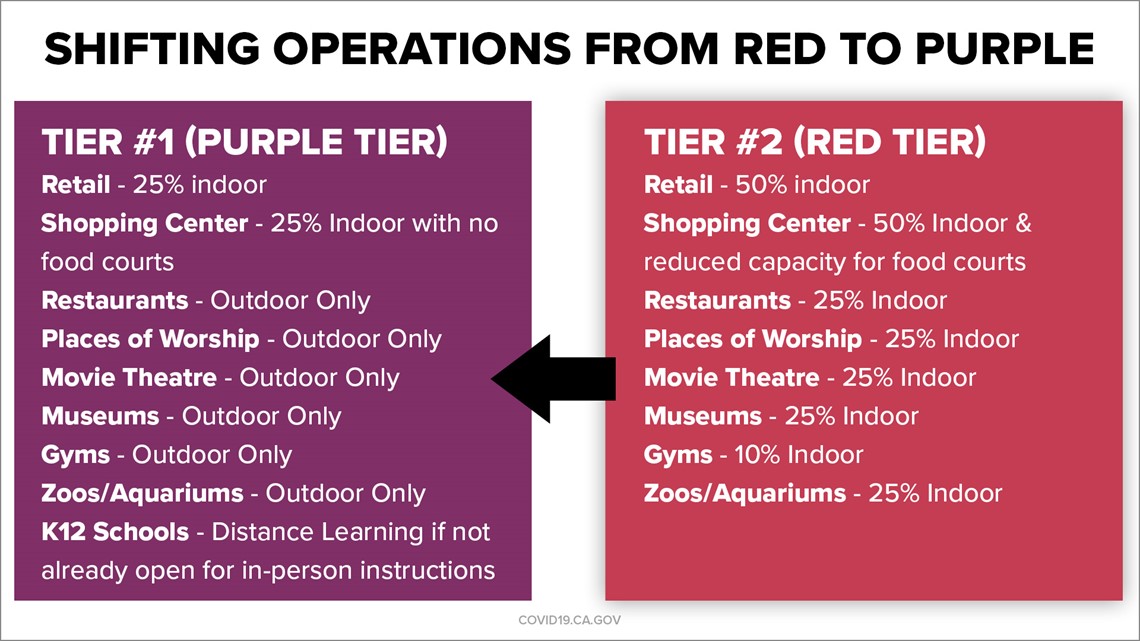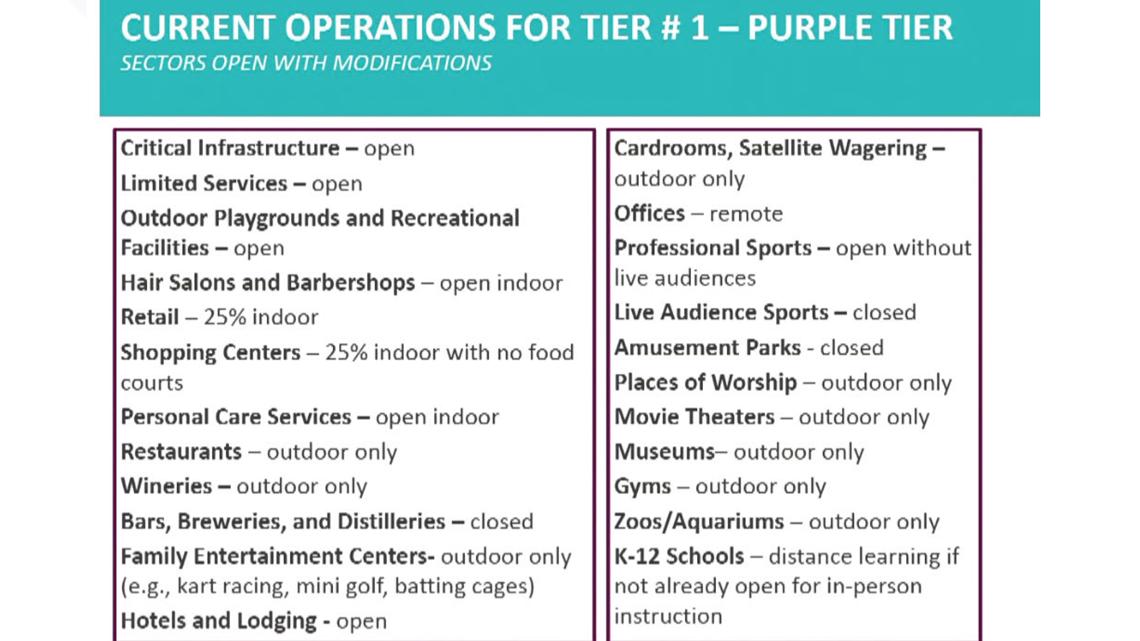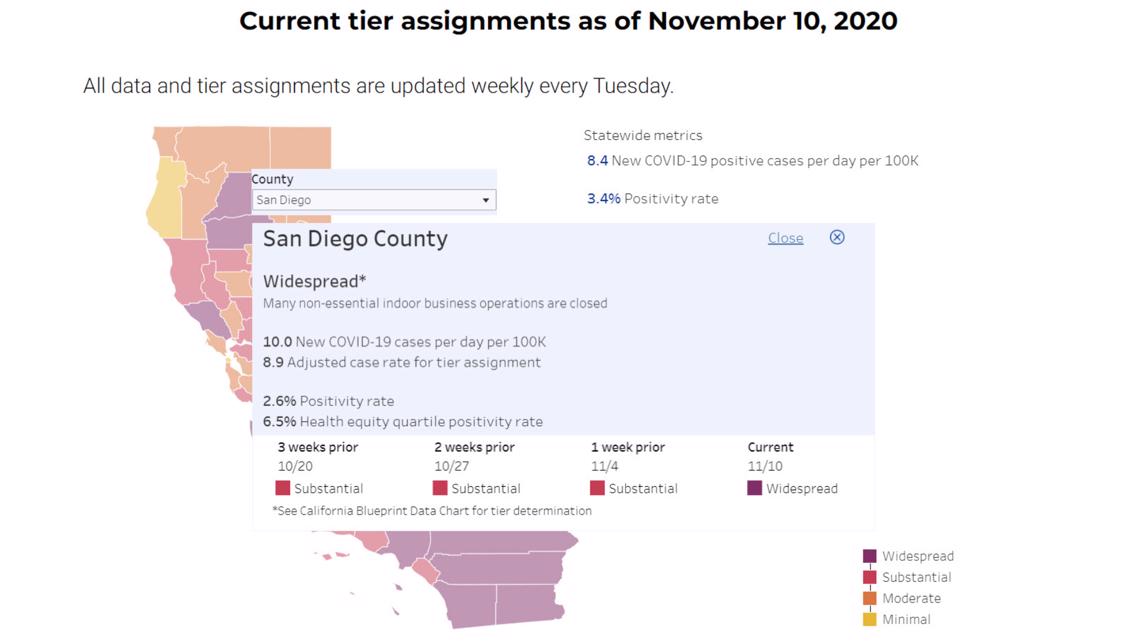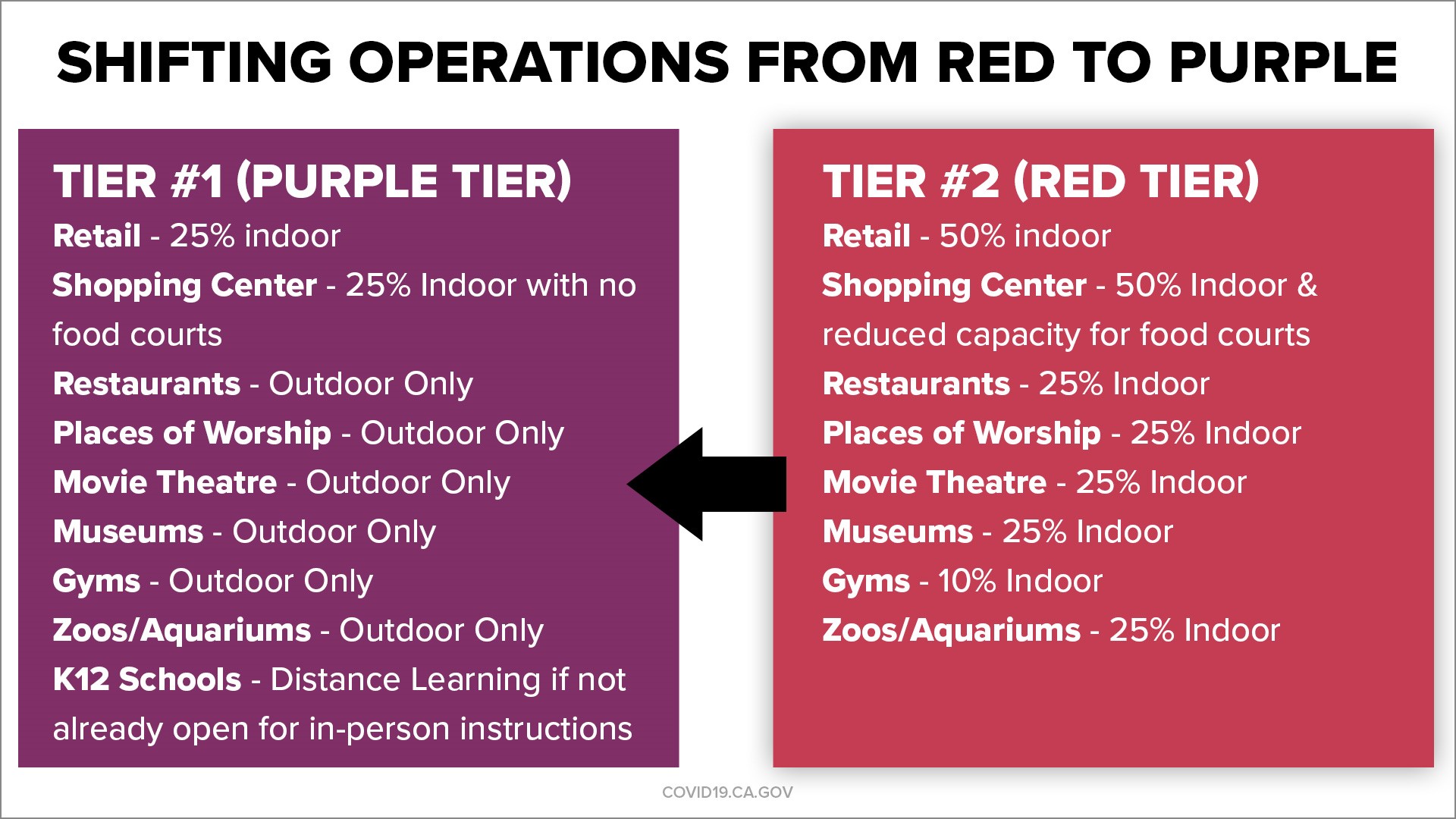SAN DIEGO — The state of California announced a new adjusted weekly COVID-19 case rate of 8.9 for San Diego County on Tuesday on their state website putting the county above the 7.0 case rate threshold for the red tier.
This higher rate is over the threshold for the second week in a row and will move San Diego up from the current red tier status into the most restrictive purple tier.
According to county officials, the changes to business operations due to the change in tier will go into effect on Saturday at midnight.


Moving from the red tier to the purple tier will impact businesses differently than reopenings and closures in May. Playgrounds, hair salons and personal care businesses remained closed well after restaurants reopened. This time in the purple tier, they can remain fully open. Gyms, churches, theaters and museums would be expected to operate outdoors.




San Diego health officials gave an update on Tuesday after the county fell into the purple tier. The update can be watched below.
Original story:
The California Department of Public Health could impose new restrictions on San Diego County businesses Tuesday if it calculates the county’s case rate higher than a 7.0, after all adjustments.
Last week, the county had an adjusted rate of 7.4 and could move into the purple tier if it has a second consecutive week with a case rate that exceeds the limits of the red tier.
“People are letting their guard down. They’re taking their masks off, they're starting to get together outside of their cohorts, they're starting to see businesses reopen and we're starting to see, again, more people mixing,” said Gov. Gavin Newsom.
While the state did not release any specific case rate data, state leaders hinted this could be the first week where no county moves into a lower tier and several counties move into a higher tier.
Publicly available data from San Diego County Health and Human Services Agency suggests the county could have an unadjusted rate above a 9.0 this week. CDPH gives credits to counties that do more than the state median testing volume, which has helped San Diego avoid moving to the purple tier in recent weeks. However, the data suggests the county may need its largest adjustment since the state began using the Blueprint for a Safer Economy metric in August to avoid moving backward.
State officials caution California could be heading for a third wave of infections. Over the summer, San Diego saw a large spike in cases after most restrictions were lifted. Although the current metric was not in use at the time, News 8 calculates it peaked at an equivalent case rate of 17.8 on July 18 and took about six weeks to return to near-current levels.
The new tier system is intended to provide early intervention, which may help blunt the impact and avoid such a large spike, although a move into the purple tier only affects businesses and schools and would not have any additional mandates to curb behaviors that many public health officers across California say are leading to more infections.
“It really matters who has been in your stable cohort, who you live with, in that household, that matters. It’s not surprising that we see household gatherings as a major source of transmission but at the same point, it's a place where we can make important inroads. Our own choices can really reduce that transmission,” said Mark Ghaly, M.D., M.P.H., Secretary of California Health and Human Services.
Local doctors worry about small gatherings, where infections are traced, especially around the holidays.
"I worry about that. If we are in a purple tier, businesses are facing restrictions, we also need to do our part and limit those small social gatherings inside our homes," said Dr. Natasha Bhuyan, family physician and Regional Medical Director for One Medical.
She is also concerned with contact tracing infection hot spots.
"Right now we are seeing an increase in cases in those small family gatherings and really being in the purple tier it doesn’t address that," said Bhuyan.
Moving from the red tier to the purple tier will impact businesses differently than reopenings and closures in May. Playgrounds, hair salons and personal care businesses remained closed well after restaurants reopened. This time in the purple tier, they can remain fully open. Gyms, churches, theaters and museums would be expected to operate outdoors.
"There are a lot of nuances and differences between all of those places. I think a blanket approach doesn't make sense," said Bhuyan.
CDPH typically calculates case rates Monday evening and announces them by noon Tuesday. If San Diego’s rate is above a 7.0 then changes to the county’s public health order would take effect 72 hours later.
"Anticipate that we'll see some counties moving backward not forward. This is exactly why we designed the tier status the way that we did,” said Newsom. “It was about being more and less restrictive not based upon political whim, but based upon the data, based upon the epidemiology and based upon the facts on the ground.”


